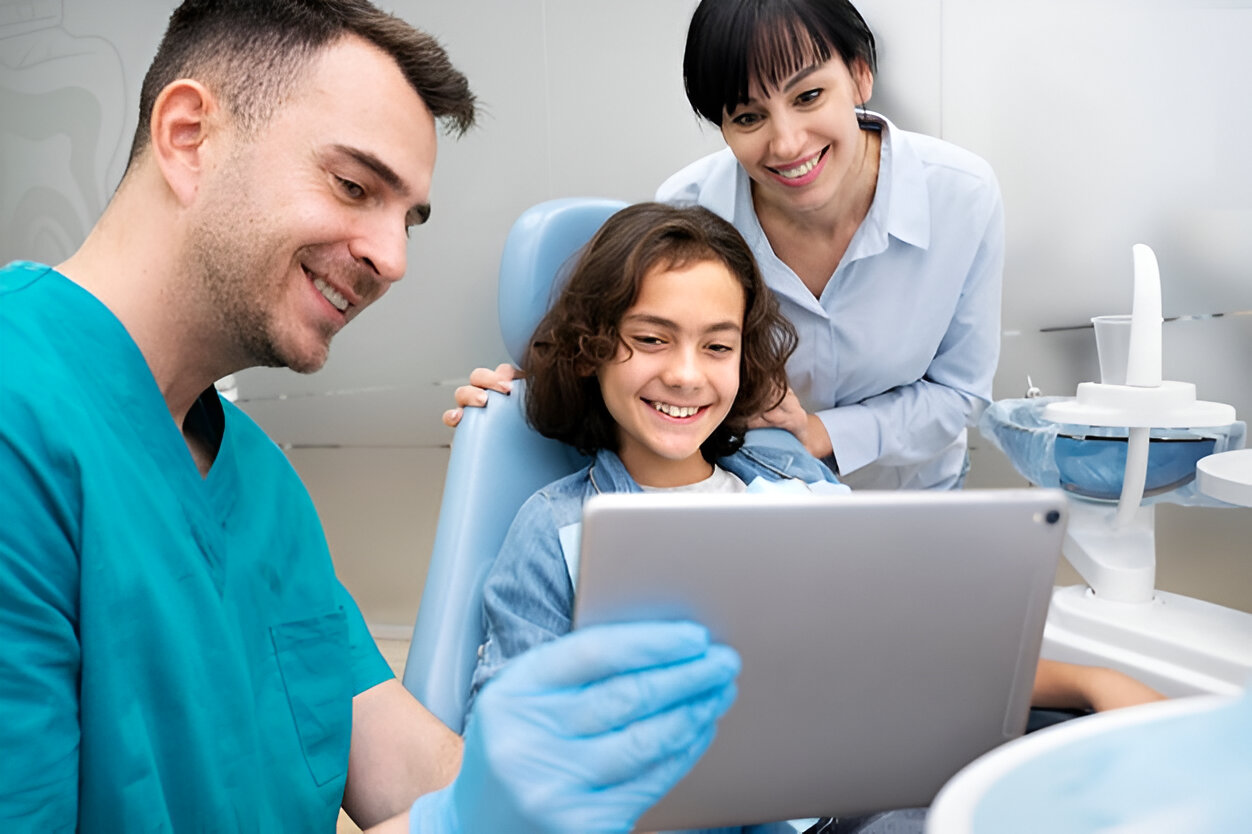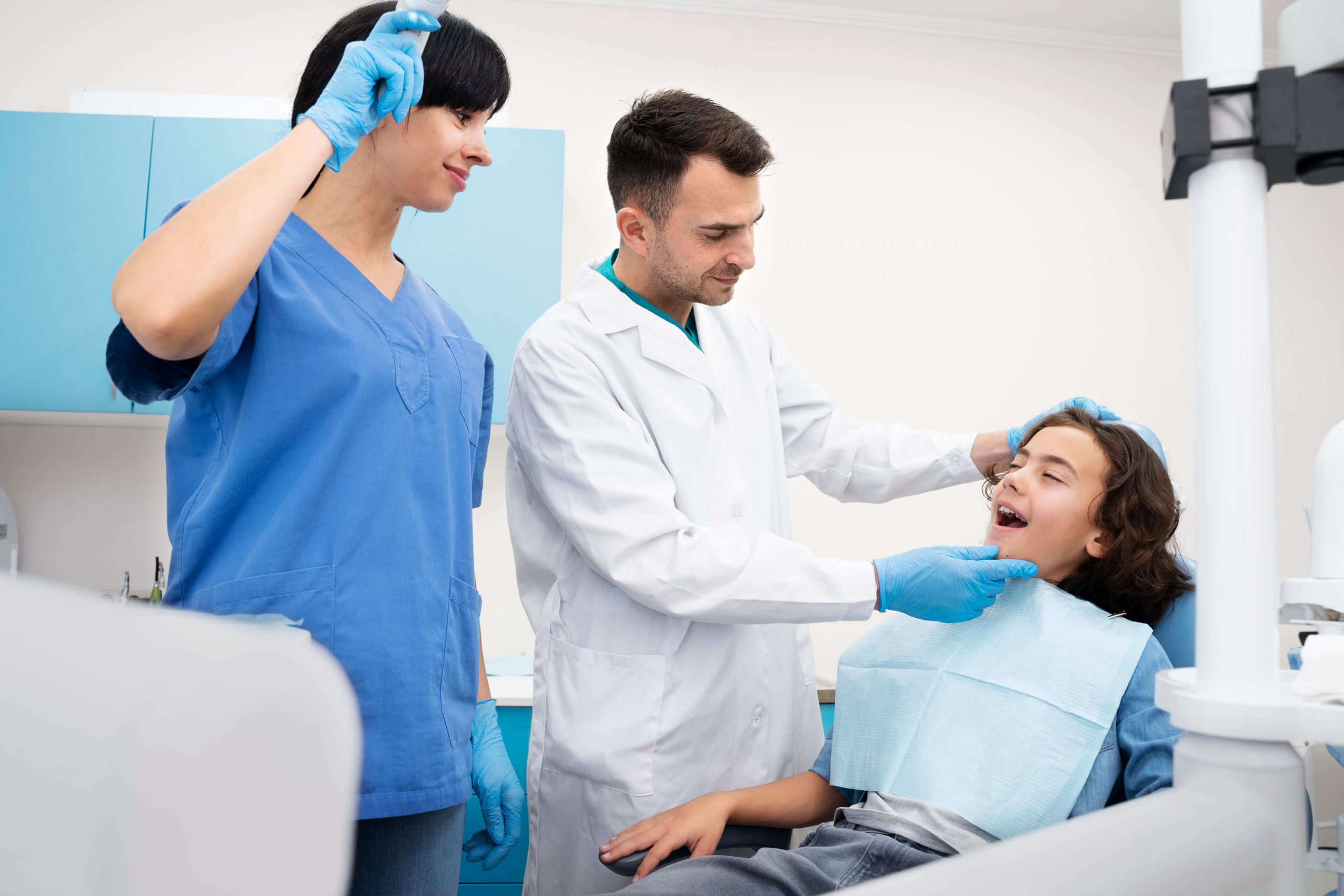
There is no reason to watch your child struggle and mouth breath during sleep. Loud breathing, mouth breathing, snoring and bad behavior during the day are signs of pediatric sleep apnea problems. And you should not accept band-aid treatments such as CPAP when treatments that cure kids sleep apnea do exist. Dr. Adams has oral appliances that can fix kids sleep apnea, mouth breathing and sleep disordered breathing. Stop mouth breathing and breathing problems once and for all.
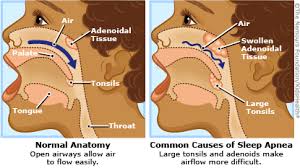
kid sleep apnea dental treatment
Best way to fix Pediatric Sleep Apnea an Mouth Breathing
The best way to fix kids sleep apnea is to improve airflow through the nose and create more space in the mouth for the tongue. This can be done with palatal expanders and myofunctional therapy. The tongue is supposed to suction up onto the palate at rest. But if the palate is too small, the tongue will fall back into the throat and block the airway. At this point, the mouth will open because more air can pass through the mouth than the nose. And it is going to take a lot of air to get past an airway blocked by the tongue.
Palate Expanders Cure Sleep Apnea
Appliances such as the ALF Appliance, the Myobrace and DNA Appliance all can help cure sleep apnea in kids. A few other popular appliance used by Dr Adams for kids are the Schwarz, Twin Block and Crozat appliances. With proper oral appliances and treatment of tongue ties and lip ties, many cases or sleep apnea and mouth breathing in kids can be cured.
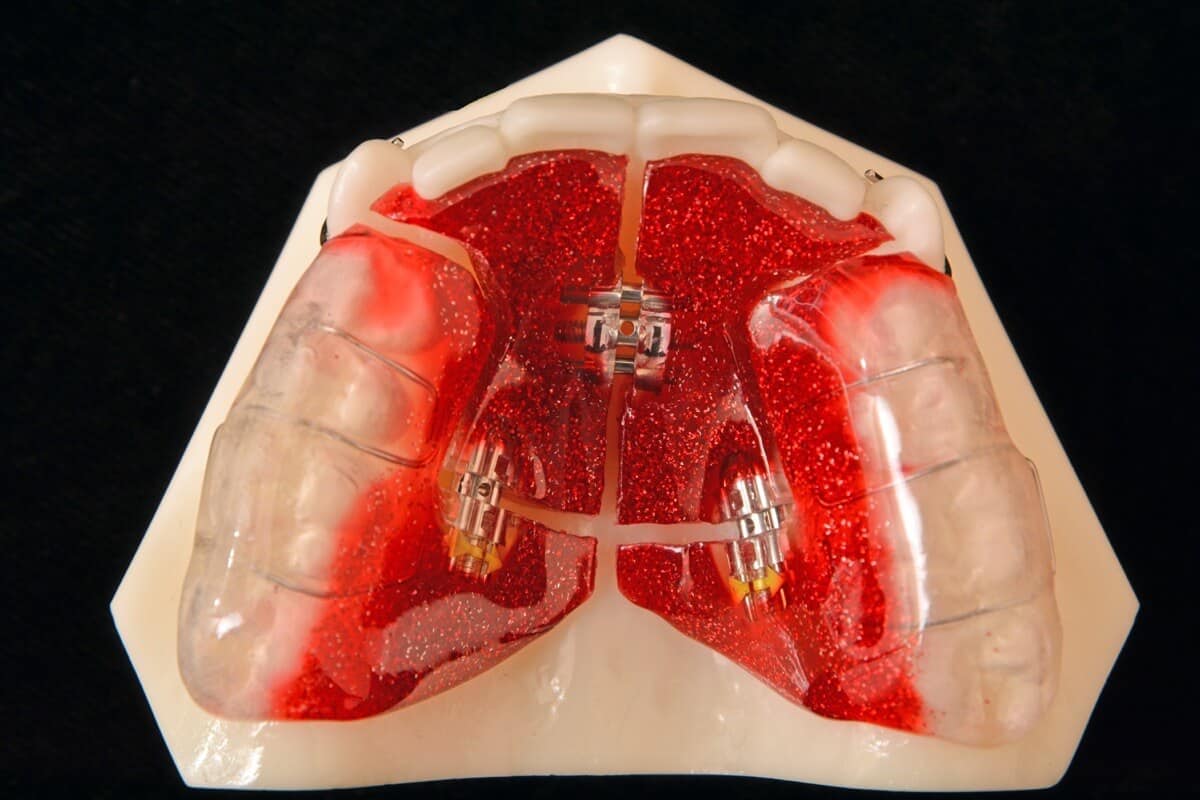
palatal expander appliance
How to Correct Kids Sleep Apnea Video
Look through this list to see if your child has any of these tell-tale signs of sleep apnea. Do not hesitate to contact Dr. Adams for a consultation and screening. Appliances exist for kids to cure sleep problems.
Frequent Stuffy Nose, Allergies Poor Nasal Breathing
The upper jaw bone is the bottom of the nose where nasal breathing happens. If your child has a deep narrow palate, the chances are their nasal breathing is poor. Most children with poor nasal breathing are kids who are mouth breathers.
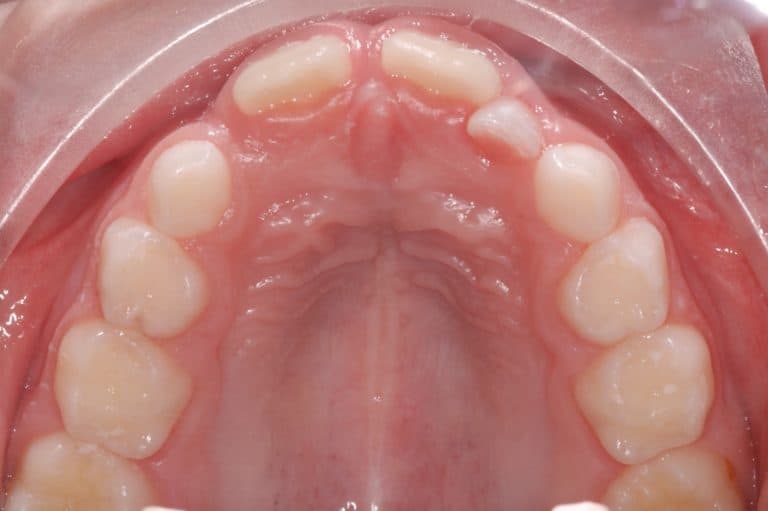
high palate kids sleep apnea
Chronic Dry Chapped Lips
Kids who mouth breath will air-out and dry their lips.
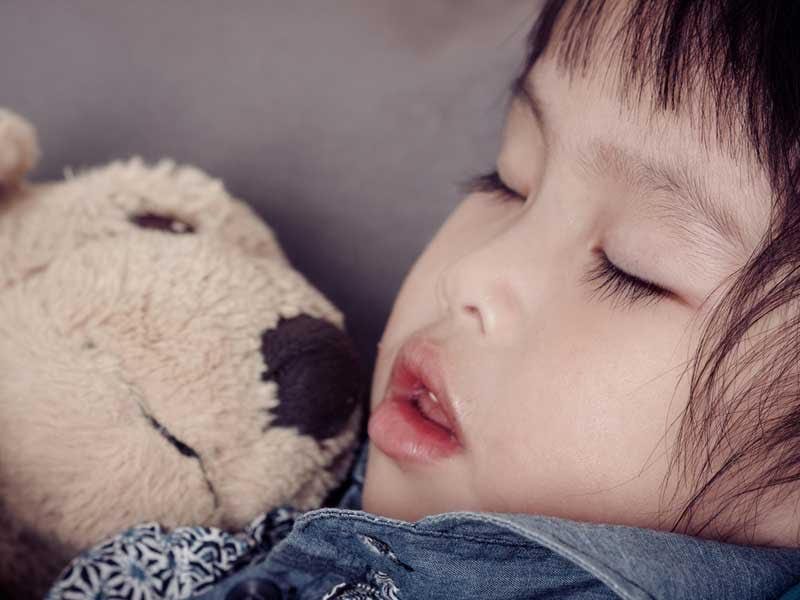
kids sleep apnea dental treatment
Swollen Tonsils and Adenoids
Mouth breathing in children is a big problem. The increased air passing through the mouth (instead of the nose) drys out the tonsils and adenoids. This causes inflammation, swelling and infection in tonsils and adenoids. It also shuts down the eustachian tube, causing ear problem too.
An open mouth at rest. Child’s usual resting posture includes an open mouth position at rest. For example, if while reading or watching a movie, the mouth is open most of the time.
Tall Narrow Face and Reverse Chin position
Look at your kid’s profile from the side and see if the chin position is in towards the throat and set back. This position is called a “retrognathic” jaw position. Retrognathic jaws are closer to the airway. Since the jaw is closer to the airway, so is the tongue. Tongues are known to be the most likely structure in the mouth and throat to obstruct the airway.
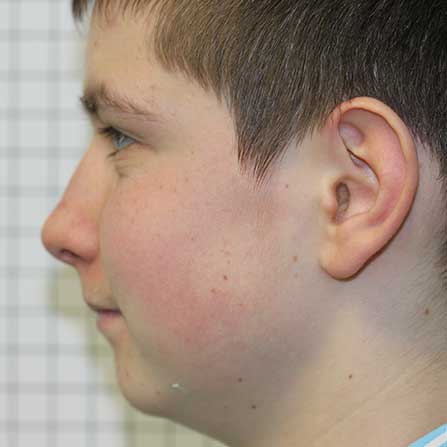
receded chin kids apnea
Bags Under the Eyes
Bags under the eyes are a tell tale sign of poor sleep and sometimes poor blood supply to the facial structures. When facial and jaw structures are poorly developed, blood supply may not be as good and baggy, bluish skin may be observed.
Crowding of Teeth and a Bad Bite
There should be generous spacing between baby teeth to accommodate larger adult teeth. Crowding and crooked teeth are a big sign of jaw and facial under development. Baby teeth are supposed to have spacing to allow for larger adult teeth to fit.
Tongue Tie
The tongue stimulates growth of the jaw and facial structures by putting pressure on growing children’s mouths. When the tongue is tied down, it cannot promote growth (expand the jaws). This leads to poor nasal breathing and mouth breathing in kids.

tongue tie treatment
Snoring and Loud Mouth Breathing at Night
Snoring and mouth breathing is proof of a pediatric airway obstruction. Loud breathing is a sign of a small or obstructed airway.
Forward Head Posture
Mouth breathers have poor posture including forward head position
Facial Muscles Moving on Swallowing
When the tongue is tied, other muscles will work during swallowing. The muscles pull on bones and deform them.
Teeth Clenching During Sleep
Kids who mouth breath and have airway problems at night will also clench their teeth
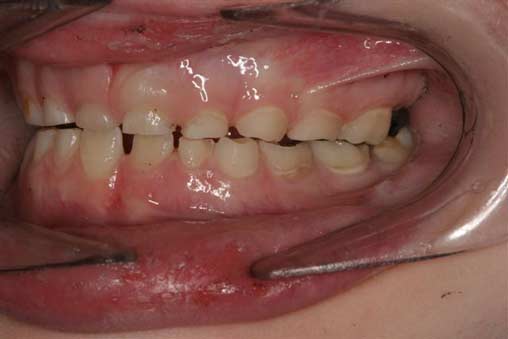
kids teeth grinding apnea
Pacifiers, Baby Bottles, Thumbs, Oral Habits
Can push the teeth and jaw structures and deform them to be the shape of whatever is going into their mouths. We clearly do not want a mouth to be the shape of a thumb or small baby bottle.
Nightmares, Bedwetting, Poor Sleep
Airway problems produce sleep disordered breathing, sleep problems. And bad dreams and nightmares. Kids can get so stressed that they pee and wet the bed.
Daytime Tiredness or ADHD-like Behavior
If your child does not get sleep, of course they will be tired during the day. They may do things like fall asleep in the car or watching exciting movies. Sometimes kids will go the other way and just act super crazy due to sleeplessness.
Drooling and Loud Eating
Let the competition begin between food and air going through the mouth. And the lips, cheeks and tongue will be slapping and slurping.
And, of course, Crowded, Crooked Teeth
The DNA design of every child is to have mouth and jaw structure large enough to teeth and tongues to fit properly. When tongues are tied, the mouth breathing and teeth/jaw problems start. It is that simple. Luckily, with proper diagnosis and treatment with sleep apnea appliances, people can live their lives in a better and healthier way. That is there is a cure for sleep apnea for those who have it. And with early identification of risk factors, most pediatric sleep apnea cases can be prevented.
Many appliances exist for treating cooked and crowded teeth in kids. ALF appliance and Schwarz appliance are two examples that are alternatives to braces. The DNA and Homeoblock appliance is a very common appliance for the treatment of adult sleep apnea and temporomandibular joint disorder.
Who Can Treat Sleep Apnea?
Dentists do not diagnose sleep apnea. Dentists can improve the size of the upper airway and improve the function of the tongue. Optimizing the upper airway can in many cases correct airway obstructions and improve or correct sleep apnea and airway resistance. Seeing a dentist for treatment with any oral appliance is not a substitute for being examined and diagnosed by a sleep apnea physician. Many health problems such as heart, kidney, and thyroid disease. Dentists do not diagnose or treat any of these diseases. Sleep apnea can involve problems with the central nervous system and collapse of the muscle tissue that is in the airway. Diagnosing sleep apnea involves:
- Oximetry. A home test that if failed will lead to more testing.
- Polysomnogram. Or an overnight sleep evaluation. This test looks at brain activity, breathing, snoring, oxygen levels, heart rate and muscle activity during sleep.
- Electrocardiogram. Tests how the heart is performing while kids are sleeping
Symptoms of Pediatric Sleep Apnea
Common symptoms of sleep apnea in children include:
- Loud snoring
- Pauses in breathing during sleep
- Restless sleep
- Gasping or choking during sleep
- Night sweats
- Morning headaches
- Bedwetting
- Teeth grinding
- Difficulty waking up in the morning
- Daytime sleepiness
- Behavioral issues or difficulty concentrating, which may be mistaken for ADHD
Causes of Pediatric Sleep Apnea
The main cause of sleep apnea in children is an obstruction in the airway, often due to enlarged tonsils or adenoids. Other factors that can contribute to pediatric sleep apnea include obesity, family history of sleep apnea, certain medical conditions such as Down syndrome, and craniofacial abnormalities. The ultimate cause of pediatric sleep apnea is the tongue falling back into the throat and blocking airflow during breathing. Yes enlarged adenoids and tonsils make things worse, but if the tongue didn’t fall back and block the airway, there would be no obstruction or airway collapse.
Diagnosis and Treatment Options for Pediatric Sleep Apnea
If you suspect your child has sleep apnea, it’s crucial to consult with a pediatric sleep specialist. They may recommend a sleep study to confirm the diagnosis and determine the severity of the condition. Based on the results, the specialist will recommend the most appropriate treatment, which may include:
- Lifestyle changes, such as weight loss or management of allergies
- Continuous Positive Airway Pressure (CPAP) therapy
- Surgery to remove enlarged tonsils or adenoids
- Oral appliances to reposition the jaw and tongue during sleep
- Positional therapy or sleep positioning devices
Frequently Asked Questions
Observe your child’s sleep patterns and look for symptoms such as snoring, gasping, or pauses in breathing. If you notice any of these signs, consult with a pediatric sleep specialist for further evaluation.
Sleep apnea in children can lead to various health issues, including growth problems, behavioral issues, learning difficulties, and heart problems. Early diagnosis and treatment are essential to prevent these complications.
Some children may outgrow sleep apnea, especially if it’s related to enlarged tonsils or adenoids that shrink as they age. However, it’s important to monitor your child’s sleep and follow up with a specialist if symptoms persist or worsen.
Sleeping on the side or with the head elevated can help reduce the symptoms of sleep apnea in some children. However, the ideal sleep position may vary depending on the underlying cause of the condition. Consult with a pediatric sleep specialist for personalized recommendations.
Sleep apnea and ADHD share some common symptoms, such as difficulty concentrating and behavioral issues. Sleep apnea can be mistaken for ADHD or exacerbate existing ADHD symptoms. It’s important to address sleep apnea if present, as proper treatment may improve a child’s behavior and academic performance.

 (301) 421 1996
(301) 421 1996 burtonsvillesmiles@gmail.com
burtonsvillesmiles@gmail.com